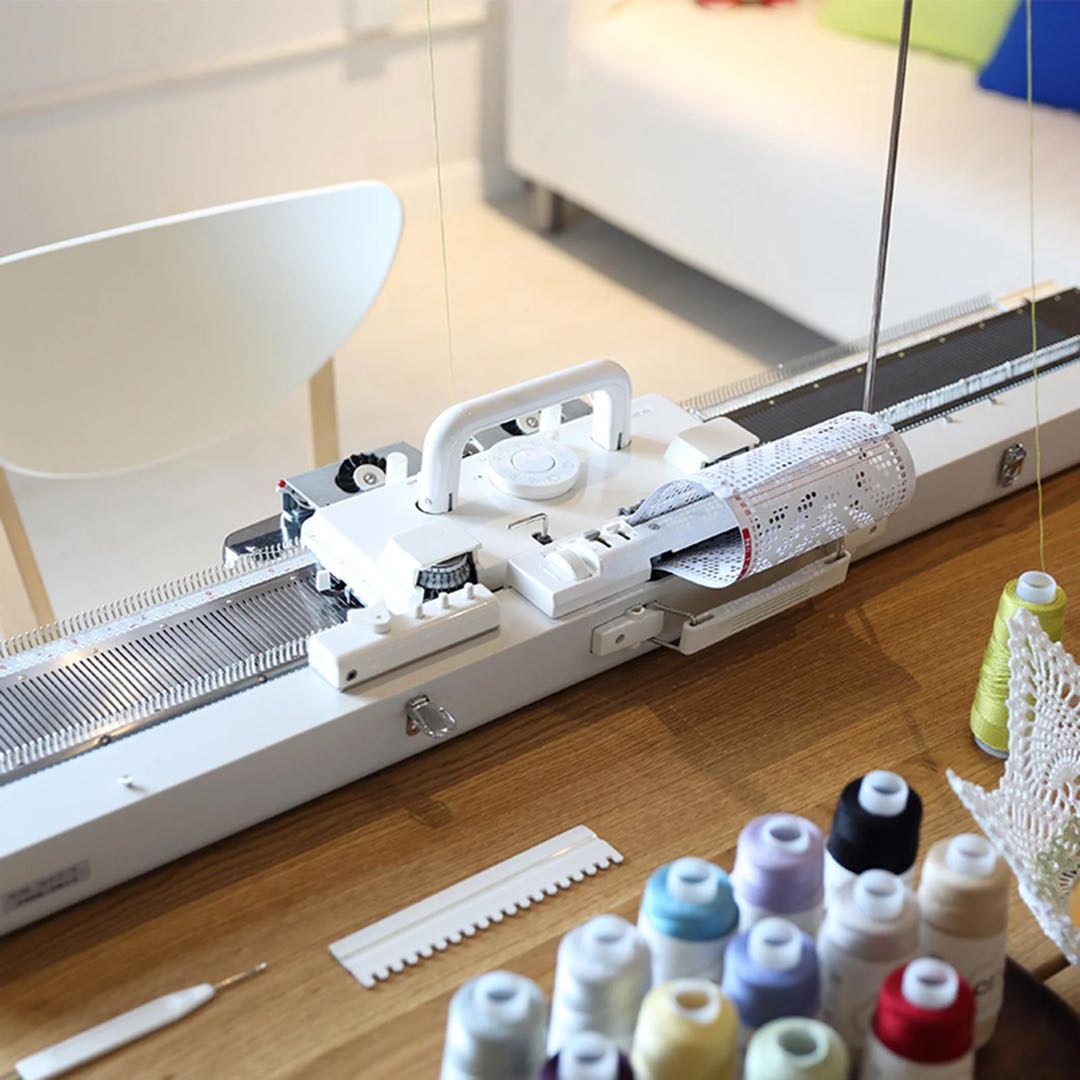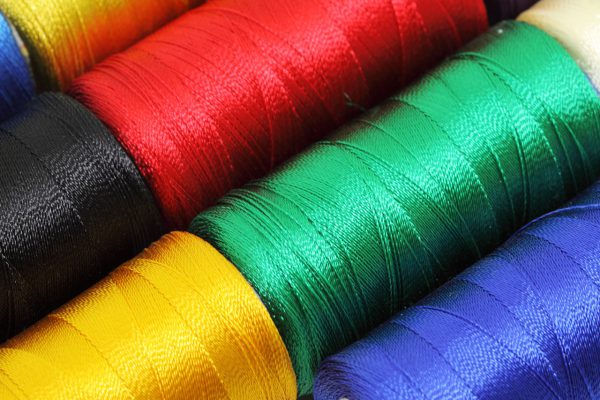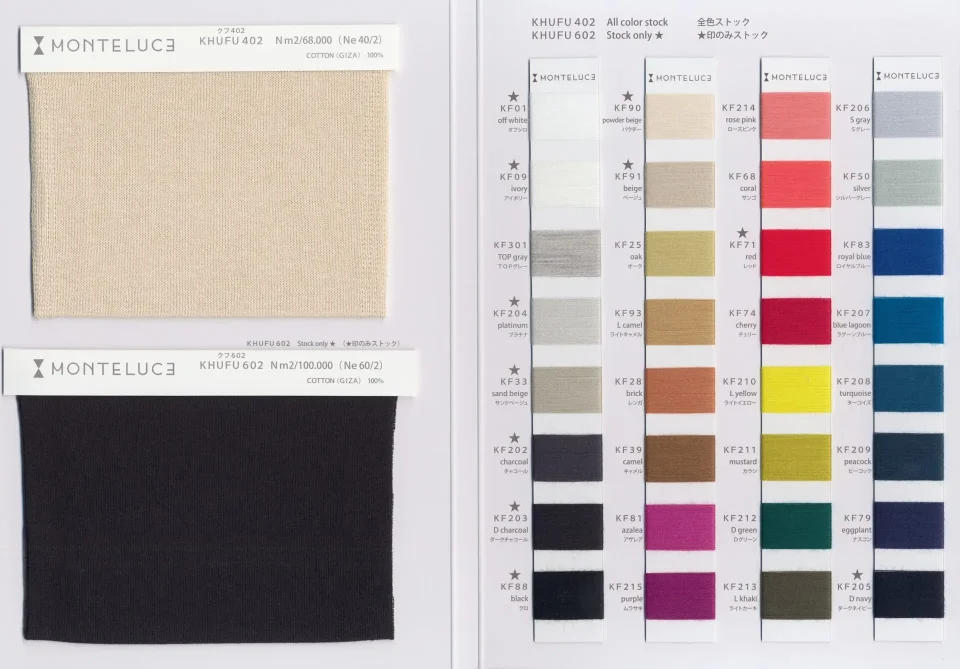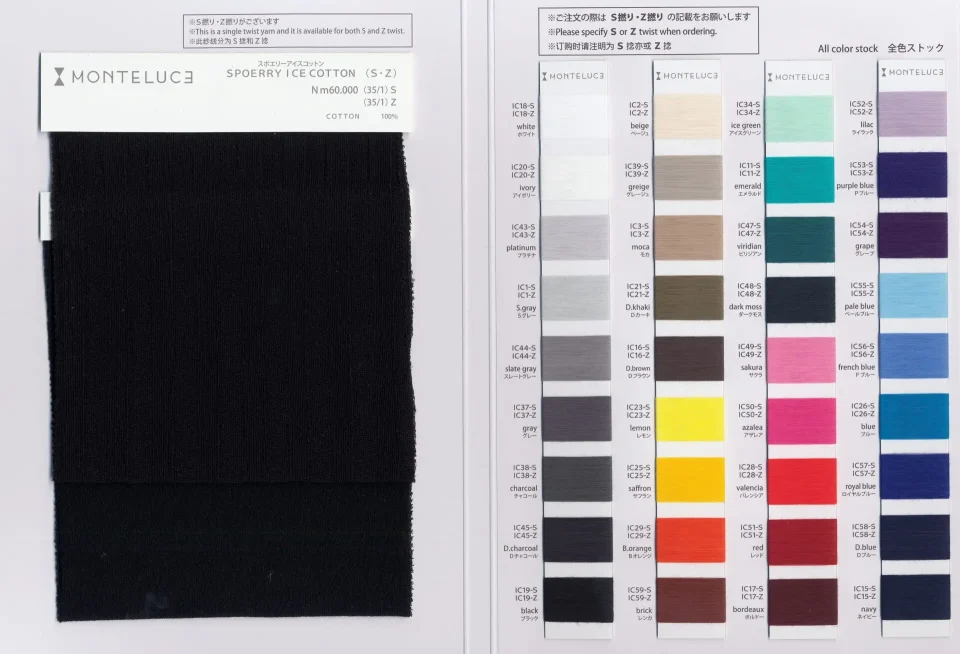KNIT MAGAZINE
- Knit Products
- Yarn/Fiber
Calculation Method for Yarn Count (Metrix / Cotton Count) and Appropriate Gauge

- Post date:
- September 10, 2024 07:00
- (Update: August 27, 2024 03:38)
KNIT MAGAZINE




We would like to introduce “the relationship between yarn count and gauge,” a topic often inquired about by our in-house staff.
This relationship varies depending on the material and structure (or method of production) of the yarn.
By learning about various materials and knitting techniques, you will accumulate valuable experience, so please consider this as a guide.
Table of Contents
First, let’s talk about yarn count. Yarn count is determined by the weight and length of the yarn.
1g: 1m = 1 count
For example, with a count of 1/10, 1 kg (1000g) corresponds to 10,000 m, which equals a 10 count. Therefore, 1 kg means the thread length is 10,000m.
In the case of 1/30, 1 kg (1000g) corresponds to 30,000 m, which equals a 30 count. Thus, the higher the yarn count, the longer the thread, which means the yarn is thinner.
I would like to address the difference between cotton and wool.
Even with the same thread, it can be confusing because it may be labeled with either a cotton count (NE) or a Metrix. However, understanding this difference is fundamental to grasping how counts work.
Generally speaking:
This difference arises because the spinning methods for cotton and wool are different.
A common example of a yarn displayed with a wool count is one made by worsted spinning.
“Worst” refers to wool that has undergone worsted spinning, a process that requires long fiber lengths (approximately 76 mm).
On the other hand, even long cotton fibers are only about 4 cm (38 mm) in length.
Because of this, cotton cannot be spun on a worsted spinning machine and must instead be spun using a cotton spinning machine.
Threads produced by cotton spinning are indicated by the cotton count. Items spun using cotton spinning can also be labeled with a Metrix.
For example, MONTELUCE Yarn’s early summer standard material “Khufu” is labeled as 2/68 in Metrix and 40/2 in cotton count. (Since cotton count 40/2 = 40 x 1.7 = 68, Metrix is displayed as 2/68.)
The reason for using Metrix is that it is easier to apply to the appropriate gauge and allows for easier comparison, so Metrix is intentionally used.

In addition to the same cotton material, “Aganes” is also described as 3/85, but since it is a yarn made by cotton spinning, it is actually 50/3 of the cotton count.
The notation 50/3 is not very familiar, so it is written as 3/85 for easy understanding. Then, the reason why it is not written as 1/28 of the total count is that the characteristic of the thread of “Aganes” is that the eyes are beautiful. The beauty of this surface is born from the 3/85 triplet twisting method.

If you increase the thread count, the thread will become rounder, resulting in a smoother texture. This way, the count notation not only helps to easily understand the characteristics of the thread but also serves as useful information.
In addition, “Spoerry Ice Cotton” is written as 35 / 1S.35 / 1Z.
Since this yarn is sold as a single yarn, S or Z is listed after 30/1. Due to the feature of the material that this yarn can be handled as a single yarn, the cotton count notation is left without converting it to the hair count. (If you want a hair count, 35 x 1.7 = 60, so hair count 60/1)

In addition, there is a hemp count, but hemp is made by spinning with a special spinning method.
“Herdmans 40” has a hemp count of 40/2, which is calculated as 40 x 0.6 = 24, so it is displayed as a wool count of 2/24.
In this way, to describe the characteristics of the thread in an easy-to-understand manner, there are various notations for count.
You can obtain a guideline for the proper gauge by converting the different counts into a wool count.
From Cotton count to Metrix ・ ・ ・ × 1.7 (Example: Cotton count 40/2 × 1.7 = 68 Wool count 2/68)
From Hemp count to Metrix ・ ・ ・ × 0.6 (Example: Hemp count 40/2 × 0.6 = 24 Hair count 2/24)
Now that we understand count conversion, the next step is to discuss the appropriate gauge (G). Generally, it is said that “Metrix= gauge” serves as a guideline.
For example:
1/12 = 12G
1/7 = 7G
1/5 = 5G
1/3 = 3G
However, this is just a guideline. Up to 12G, “Metrix = gauge” often holds true, but this rule doesn’t apply as well beyond 14G.
For counts like 2/60, 2/48, 2/30, 1/43, and 1/27, the appropriate gauge can vary greatly depending on the material and the thread’s structure.
The gauge also depends on the type of knitted fabric, such as plain stitch or ribbing, as well as the type of knitting technique used.
Ultimately, the choice of gauge comes down to personal preference.
For example, with standard worsted wool:
However, this can change significantly when using fancy yarns.
For example, with 1/13 mohair tam-tam yarn, you might expect 12G to be appropriate based on the count, but knitting it at 12G results in a stiff fabric, and the mohair doesn’t become fluffy.
Instead, I recommend knitting it at 7G. For tam-tam yarn, it’s often best to significantly lower the gauge for better results.
Mix knitted fabric has become a recent trend. How do you calculate the appropriate gauge for the same material? In the case of “Puff1/14”:
Since 1/14 + 1/14 + 1/14 = 3/14 = 1/4.6, 5G is suitable for three strands. But what about when using different materials with different counts?
Here is an introduction to the method for calculating the count when knitting different materials together.
When combining different materials, first convert the count to denier.

for example,
When knitting “Puff Puff 1/14” and “Jazz Cross 1 / 3.1” in a straight line
1/14 = 9000 ÷ 14 = 643 denier
1 / 3.1 = 9000 ÷ 3.1 = 2903 denier
643 + 2903 = 3546 denier
9000 ÷ 3546 = 2.53
Therefore, the total count is about 1 / 2.5 for Metrix, and the appropriate gauge is 3 gauge.
The concept of count is intricate, and combining different threads opens up a wide range of design possibilities.
You won’t know the exact outcome until you actually knit it, but calculations can provide a rough idea. We hope you use this as a reference when combining various yarn.
Subscribe Now
To receive the latest updates and insights, subscribe to our newsletter.
Contact Us
For further inquiries regarding this article, please feel free to contact us.